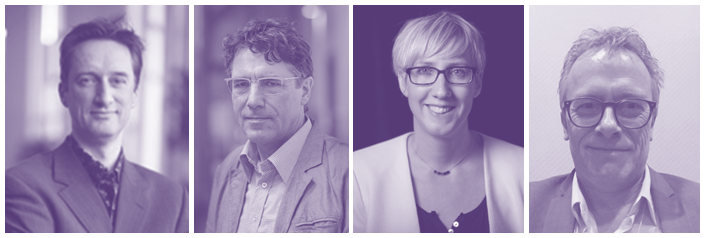Date/Time
Date(s) - 01/02/2018
3:00 pm - 5:00 pm
Location
eLab, Mediastudies (BG1)
Categories
This edition of the CREATE Salon is dedicated to the potential that ‘the digital’ offers for the presentation and publication of results in humanities research. The first segment of the Salon thematizes the potential (and risk) involved in the digital visualization of data. Jaap Boter will discuss some dilemmas encountered in digital map making. Loes Opgenhaffen will share her ideas about how to express uncertainty in a three dimensional virtual reconstruction of an historical structure. The second segment zooms in on a specific form of presentation of scholarly results: publication. Jack Post will recount his experiences from a project that developed an experimental design for a digital academic journal: Tijdschrift voor Mediageschiedenis / Journal for Media History. Finally, Marti Huetink will reflect on recent developments in digital humanities from the point of view of an academic publisher.

Jaap Boter (VU/UvA): Visualizing Big Data on a map for interpretation: challenges and considerations
Digital maps and GIS software (e.g., QGIS) are an attractive option to visualize and understand some of the large datasets now available in Humanities. However, apart from the technical skills to plot such data, there are also some visualization challenges and considerations to bear in mind. This short presentation will list some of the most common warnings and recommendations from the field of geovisualization.
Jack Post (UM): An experiment design for the online academic journal TMG – Journal for Media History
The special issue Typography in Media Historical Perspective of TMG – Journal for Media History focusses on the historical research into typographic systems and graphic design practice. Because of the special attention to the relationship between theory and practice in this issue, we decided to ask two groups of students of the study Graphic Design ArtEZ in Arnhem to design an experimental online version of the journal. We selected the work of Kemal Eroğlu and Ekaterina Zaitseva, the coding was done by Bernd de Ridder. In my contribution I want to present the experimental design, discuss the possibilities and limitations thereof, and reflect on working with students on such a rather complex production.
Loes Opgenhaffen (UvA): Mind the gap. Documenting data and uncertainty in the process of 3D reconstruction
During the reconstruction in 3D of heritage that has been preserved only partially or lost entirely, such as the first permanent movie theater of Amsterdam Cinema Parisien, missing data causes gaps that need to be filled to complete the reconstruction. How certain is the data that has been used to permeate the lacunae and how credible leaves this the final 3D reconstruction? To this end, a Level of Certainty index has been developed, that in combination with the recording of the modelling process and the choices that have been made in order to re-create missing parts, produce a true transparent and verifiable scientific 3D model.
Marti Huetink (Brill): DH@ Brill. A publisher’s perspective
How does a publisher respond to developments in the Digital Humanities and what should the publisher’s role be? What does it mean for our traditional position of broker between the scholarly world and the library market?
